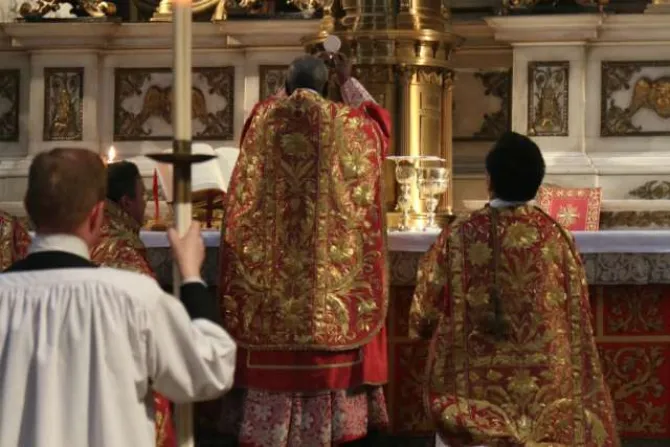Christensen's letter also told priests that "in instructing the faithful regarding questions of posture, gesture, reception of Communion, etc., clergy are to refer always to the General Instruction of the Roman Missal, the Order of the Mass, and other officially promulgated ritual books for the form of liturgy they are celebrating; or to documents propagated by the Holy See or the United States Conference of Catholic Bishops and approved by appropriate authorities."
"Sources such as independent websites and social media platforms that are unaffiliated with the Holy See or the USCCB are not to be considered trustworthy or appropriate for catechesis," the bishop wrote.
Fadness declined to name the independent websites the bishop had in mind, but when presented with examples of such websites, namely Word on Fire, Our Sunday Visitor, and Catholic Answers, the spokesman told CNA that "The Bishop has no problem with solid Catholic sources such as Word on Fire, Our Sunday Visitor and Catholic Answers. But, of course, he is not bound by what any contributing writers to these sites say, and he prefers that his priests give priority to the GIRM and approved USCCB documents as catechesis for the faithful on liturgical matters."
The deacon told CNA that Christensen "is the Bishop for our diocese and has full authority to determine liturgical practices within it."
He cited as an example of the bishop's authority a March 2019 decision to require Catholics to kneel in the Mass after the Agnus Dei, as is the norm in the U.S., but was not the practice in Boise until Christensen's intervention.
In his February letter, Christensen offered additional liturgical norms for the diocese, instructing that while Catholics are permitted to receive the Eucharist while kneeling, priests should not use kneelers or Communion rails that might encourage the practice. The bishop also requested that priests celebrating the Extraordinary Form of the Mass notify the bishop they are doing so, and instructed that "elements from Missal use at the Extraordinary Form liturgy are not to be imported into Masses celebrated under the Ordinary Form."
At least two parishes in the Diocese of Boise offer Mass in the Extraordinary Form, one of which is administered by the Priestly Fraternity of St. Peter.
Christensen, 67, has been Bishop of Boise since 2014. He was named Bishop of Superior, Wisconsin, in 2007. Fadness told CNA that Christensen's aim was "reminding his priests that the integrity of the instruction within each Missal must be respected insofar as possible."
The letter was sent to priests in February, but published at the end of March, after the public celebration of Mass had been suspended across the U.S. because of the coronavirus pandemic.
Asked about the timing of the letter's publication, Fadness explained that the diocesan newspaper "publishes only twice monthly."
"The Bishop is merely asking that the Ordinary Form be followed during a Novus Ordo Mass and the Extraordinary Form be followed during the Traditional Latin Mass," Fadness explained.
(Story continues below)
Subscribe to our daily newsletter
"Some of our priests were mixing Extraordinary Form practices with the Ordinary Form, which was causing confusion among the faithful, some fearing that we were introducing pre-Vatican II practices."
Ed. note: This story has been updated.
J.D.Flynn served as Catholic News Agency's editor-in-chief from August 2017 to December 2020.




